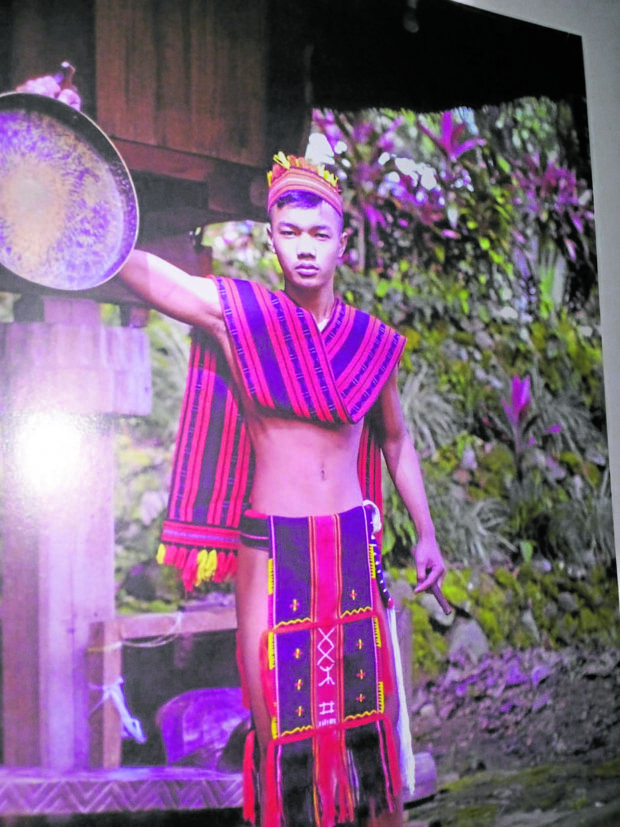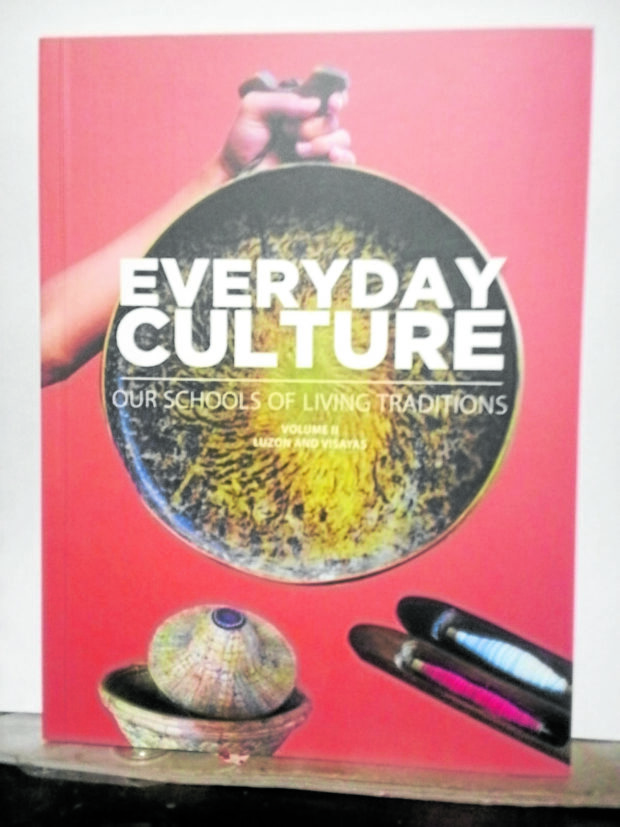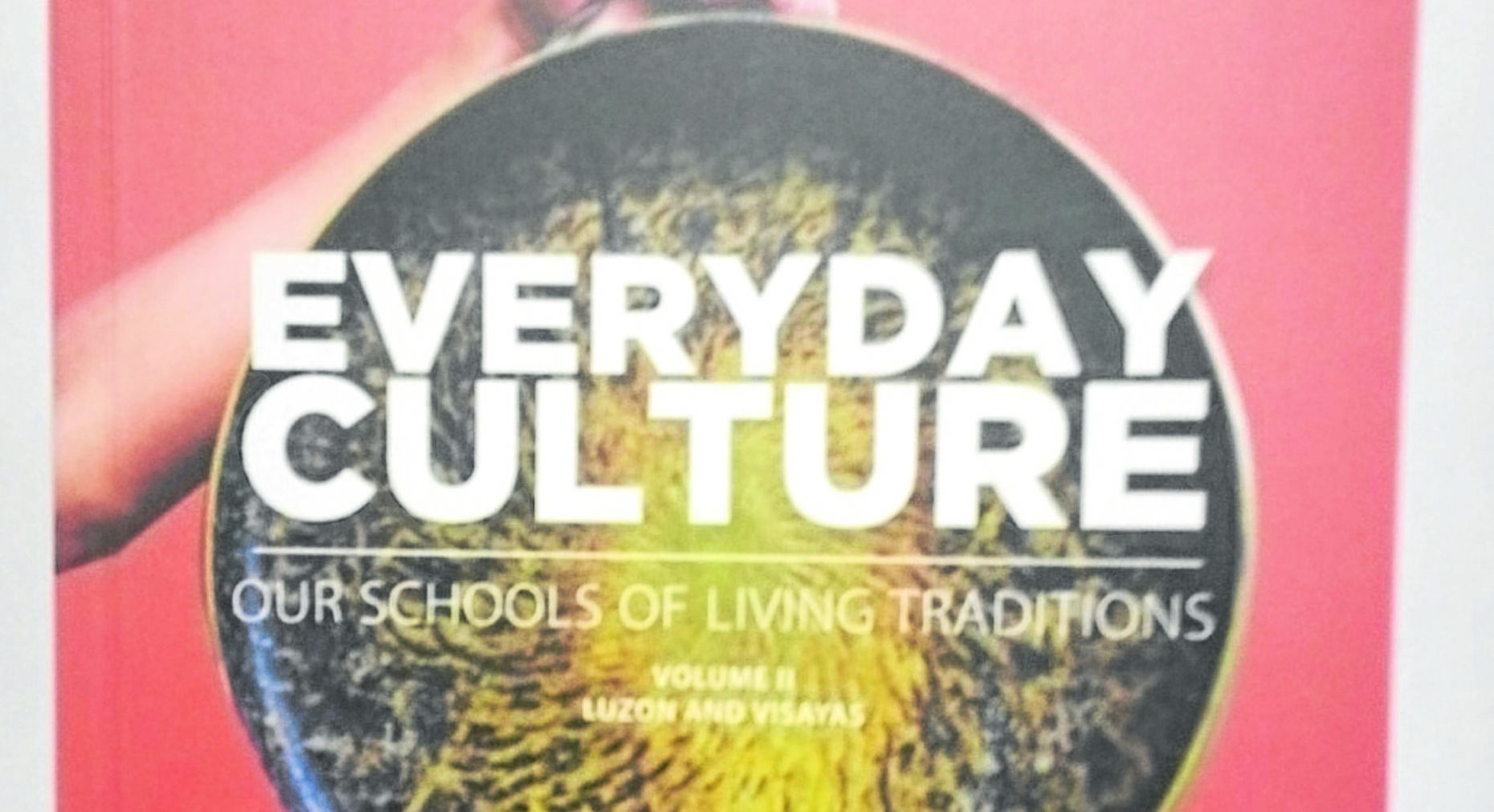In selected provinces across Luzon and the Visayas, Schools of Living Tradition (SLTs) have been established in the indigenous communities.
In these schools, cultural masters train the young, called learners, to appreciate the way of life, the arts and crafts and the cultural traditions of their ancestors. The end in view is to make the youths proud of their heritage and to make them face the future conscious of their cultural identity.
The SLTs are found in Abra, Mountain Province, Ifugao, Kalinga, Rizal, Quezon, Aklan, Capiz, Antique, Guimaras, Palawan, Negros Occidental and Bohol. Their activities and accomplishments have been documented in a book, “Everyday Culture” (Our Schools of Living Tradition), published by the National Commission for Culture and the Arts (NCCA) with support from Sen. Loren Legarda.The book is written by Bambina Olivares and is filled with color photos by a team of 20 photographers.
In Abra, young Tingguian (who prefer to be called Itneg) attend young SLT classes every Saturday and are taught by cultural masters to appreciate their heritage and value traditional knowledge, skills and attire, making this a part of everyday life. The focus is on sustainability and also to adapt to current realities.
Native practices
In Mountain Province, home of the Balangao ethno-linguistic group, an SLT was established to preserve indigenous values and native practices and, to preserve as well, native implements by using locally available resources. This could uplift the economy through native weaving and handicraft activities, while the masters and the learners are promoting their music and dance traditions.
In Ifugao, they learn hudhud, an epic narrative chanted during harvest time and rituals for the dead. “The hudhud was in danger of dying until the NCCA and its local partners intervened to preserve it,” said Olivares. The epic has since been institutionalized into the town fiesta.
The Kalinga (I love their coffee) are another interesting cultural community. They are described as fun-loving people who celebrate key events in their history as well as in daily life, like victory over enemies, peace treaties and heroism. They have many art forms which are being preserved, like courtship dances, music, and pangu, their form of bayanihan or labor freely rendered.

The Dumagat are found in Rizal and Quezon. SLTs help preserve their language, dances, cuisine and crafts such as basketweaving.
In Quezon province, the Dumagat learners are taught, among many other cultural practices, folk fishing techniques.
Music and dance play an important part in the life of the Ati in Aklan, Western Visayas. Learners are taught the age-old dance sotis, which is performed on bamboo floor of newly-constructed house or in a wide open space. In the komposo, singers describe the life the townfolk and are accompanied by guitarists and banjo players.
For the Panay Bukidnon, practices which should be preserved include collecting medicinal herbs whose secrets should not be divulged to outsiders. The cultural masters share their knowledge with the young and can benefit the community.
The Ati are found in Antique, Guimaras and Negros Occidental. In Antique, the young learn such arts and crafts as the hilot (therapeutic massage), the burial ceremony, the use of ginger and chants to heal a community member and the Cariñosa courtship dance.
In Guimaras, the cultural masters concentrate on revitalizing the language and other aspects of culture, like songs, poems and bedtime stories. An Inati dictionary is created, along with an appreciation of oral traditions
On the other hand, the Ati learners in Negros Occidental are taught traditional dances which mimic the movements of monkeys, chickens and other denizens of the animal kingdom. Indigenous games remain part of daily life of the Ati, and these are played in schools.
Traditional arts and crafts
In Bohol, an important ecotourism center, the STLs are developing for the Boholano learning guides on traditional arts and crafts, as well as on knowledge threatened by modernization. The emphasis is on cultural identity and pride of place.
In the fabled province of Palawan live the indigenous Pala’wan who are close to the forest. The young are taught traditional handicrafts, like the famous Palawan basket tingkop, traditional dance and music and indigenous cuisine.
“The important of the SLT cannot be overstated,” Olivares said. “It has helped promote traditions for the youth and for the continued observance and practice by future generations.”
This book will bring the indigenous to peoples of Luzon and the Visayas (the scope of this volume) to students in Manila, with their laptops, computer games and smartphones. But there is no substitute, of course, for an outreach visit to the people and places described. —CONTRIBUTED INQ













































